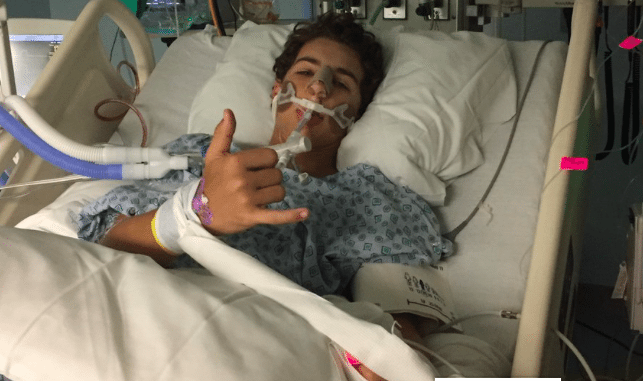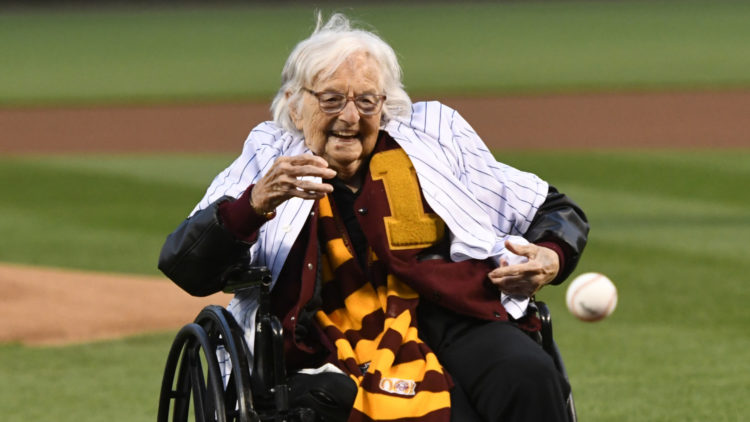When is a nosebleed a sign of a more serious injury?

Every inning of every game, baseball players are just one bad throw or foul ball away from a black eye or broken nose. And right now, the country is rallying around the son of a former Atlanta Braves player who took a rough hit to the face.
Initially, 15-year-old Jason Lockhart didn’t seem badly hurt. A couple of days later, though, things got more serious and Jason ended up on life support.
Sydney Lockhart, Jason’s sister and the daughter of former Braves player Keith Lockhart, is keeping everyone updated through her Facebook page. She described what happened back on June 17:
… Jason was running to home on a pass ball, as Jason stepped on home plate, the catcher picked up the ball and turned to fire it back to the pitcher and hit Jason directly in the face. His nose was broken pretty badly and he needed some stitches.
The bleeding didn’t stop, though, and it turns out he had a ruptured artery in his nose. Physicians put the teen on life support, and more surgeries are likely. The family is hoping the most recent surgery may have stopped the bleeding.
I don't think y'all understand how much of a champion this child is 💛 pic.twitter.com/TaGn7XPFq5
— syds (@SydneyLockhart) June 21, 2017
We Need Your Help: Take Our Vacation Survey (And Enter To Win A $100 Gift Card!)
Jason’s dad, Keith Lockhart, also tweeted his thanks to all those rallying around his son, saying “It’s been rough… but we’re confident he’s going to be ok.”
Thanks so much for all the outpouring prayers & support for Jay. It's been rough, a few surgeries but we're confident he's going to be ok.
— Keith Lockhart (@klocky7) June 24, 2017
Nosebleeds Are Usually Benign
Nosebleeds can be scary, but they aren’t a rare occurrence. In fact, 1 in 7 people know what it’s like to have one, according to the American Academy of Otolaryngology – Head and Neck Surgery.
Most of the time, a nosebleed indicates a broken blood vessel in the nose and is nothing to worry about. They happen sometimes when you’re in a dry climate or room, and young children (between 2 and 10 years old) and older adults (between 50 and 80 years old) are more likely to experience them, according to the AAOHNS.
According to the Mayo Clinic, you should “seek emergency medical care” following a nosebleed if the bleeding:
- Follow[s] an injury, such as a car accident
- Involve[s] a greater than expected amount of blood
- Interfere[s] with breathing
- Last[s] longer than 30 minutes even with compression
- Occur[s] in children younger than age 2
Causes For Concern
Rarely, a nosebleed can be a sign that something more serious is happening, as in Jason’s case.
Recurring nosebleeds, meaning the bleeding won’t stop, should be investigated. According to the AAOHNS, recurring nosebleeds can sometimes be a sign of a fracture, so “head injuries that cause nosebleeds should be regarded seriously.”
Other uncommon possibilities are “hereditary hemorrhagic telangiectasia, a disorder involving a blood vessel growth similar to a birthmark in the back of the nose,” and a tumor, either cancerous or non-cancerous, according to AAOHNS.
RELATED: Healthy 20-Year-Old Woman Didn’t Know She Was Having A Stroke
Bottom line? If you’re concerned, get it checked out.
We send our best wishes to Jason Lockhart for a full recovery!





